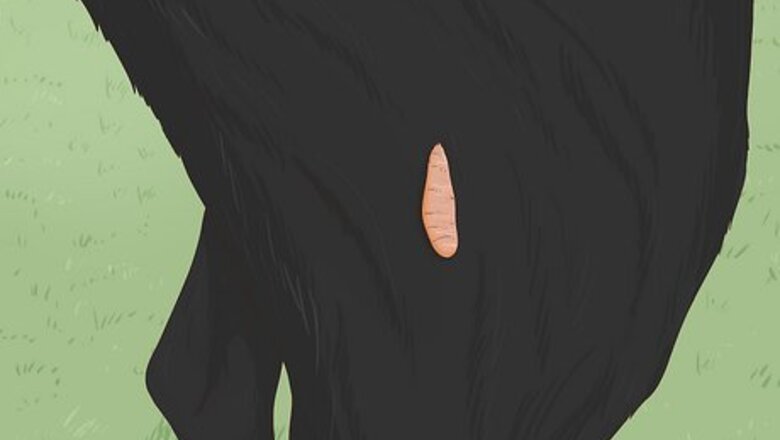
views
- Clip your dog’s fur surrounding the tag. Then, disinfect the patch of skin with 70% isopropyl alcohol.
- Cut the dog's tag with curved mayo scissors while someone else holds the dog to keep them calm and safe.
- Apply a gauze bandage to the area and wait 3-5 days for the wound to heal.
- Always consult a veterinarian before you perform any procedures on your pet.
Cleaning the Tag and Sterilizing Your Tools
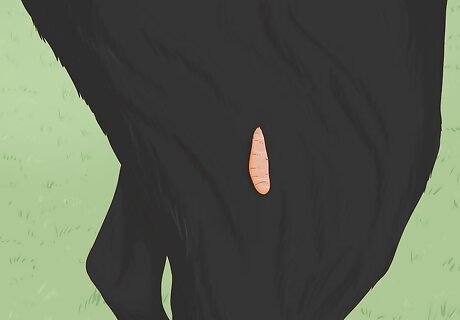
Confirm that the growth is a skin tag. Skin tags in dogs can be easily confused with warts, which are more dangerous because they can grow into malignant tumors. Unlike warts, though, skin tags have a narrow stalk that is attached loosely to the skin. They may be flat or teardrop-shaped, can move or dangle, and they are the same color as the dog’s skin. Note that skin tags aren’t general harmful to your pup, so it’s best to leave it be if it’s fairly small or otherwise not bothering them. Did You Know? Dog skin tags originate from fibroblasts (cells in a dog that are overactive). They aren't specific to any particular dog breed or canine age group. Some believe that friction may contribute to skin tags, too.
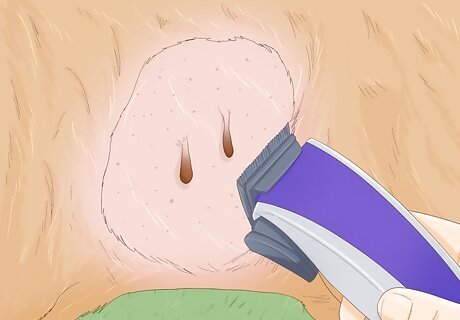
Clip away the fur around the skin tag. If there is hair around the skin tag, remove it with an electric clipper. Brush or wipe away any stray hairs that remain after clipping. This will help you ensure that the area is clean.
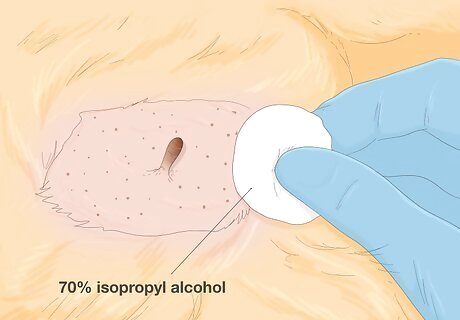
Disinfect the area with 70% isopropyl alcohol. Soak a cotton ball with at least 5 mL (0.17 fl oz) (a spoonful) of either 70% isopropyl alcohol or 10% povidone-iodine. Then swipe the tag itself and the area around it.
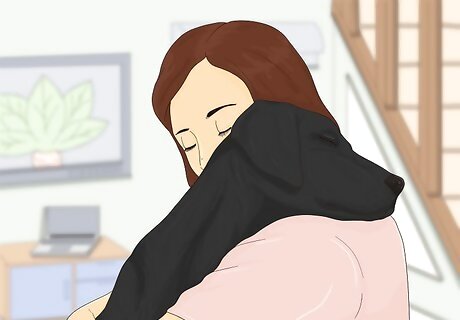
Have someone else hold and calm the dog. You need the dog to be still so that you can cut carefully. Enlist someone that your dog trusts to help you, so that the person can effectively keep the dog calm.
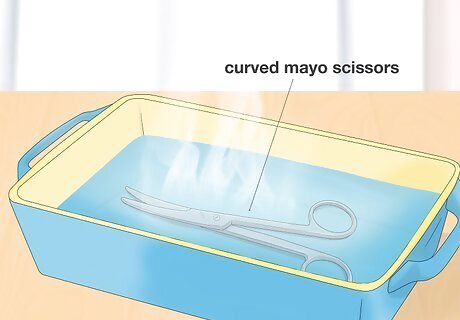
Sterilize surgical scissors in a pan. Sterilize a pair of curved mayo scissors if you are going to cut the skin tag. Sterilize a piece of string or floss if you want to tie off the skin tag instead. Use any clean, shallow plastic pan (or even a lunch box) for this purpose. Place 250 mL (8.5 fl oz) of water in the pan, plus 10 mL (0.34 fl oz) of 10% povidone-iodine. Immerse the scissors in the pan for a full minute to sterilize them. Using curved scissors is important, as they will help ensure that the skin tag’s stalk is cut as close to the skin as possible.
Detaching a Skin Tag
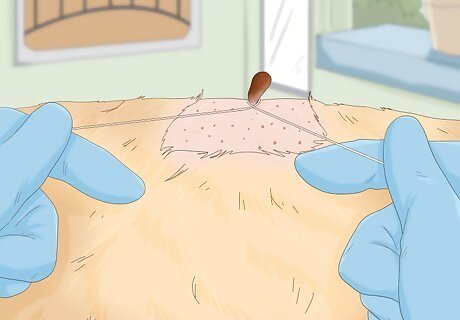
Tie the skin tag as an alternative to snipping it off. Using the clean string, thread, or dental floss, tie around the base of the stalk as tightly as possible and as close to the skin as you can. Check the area daily. The tag will swell for approximately 3 days, then it will begin to shrivel, turn dark, and fall off within a week.
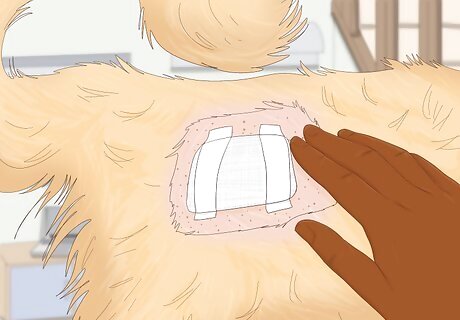
Keep an eye on the wound. Make sure that no infection sets in. If it does, take your dog to the veterinarian to get the infection treated. Common signs of infection include swelling, redness, or any sort of discharge.
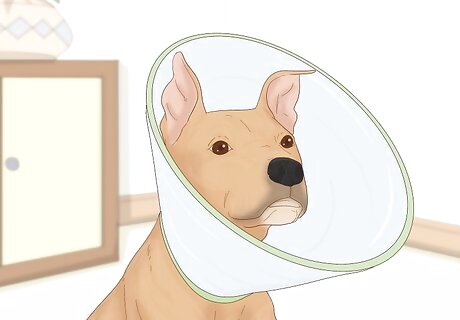
Use an E-collar to keep your dog from licking the wound. You may need to put a cone on your dog if it repeatedly tries to lick the wound. Cone-shaped E-collars keep your dog from biting or licking the tied tag or the wound.
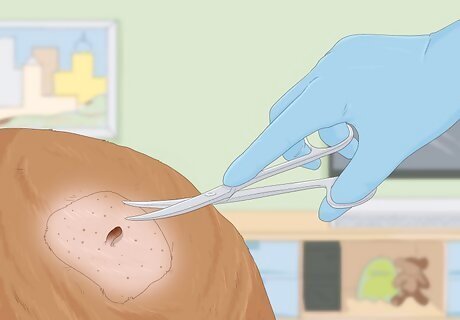
Cut the stalk of the skin tag to remove it quickly. Using the curved mayo scissors cut the stalk at its base as close to the skin as you can. It will bleed, so be prepared with clean gauze bandages.
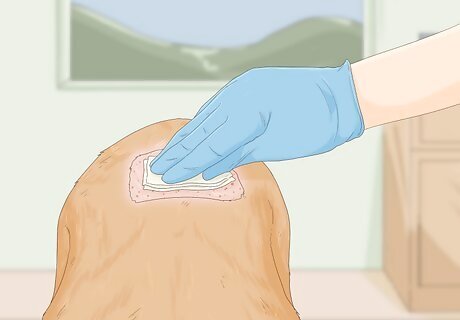
Apply direct pressure to the wound with a gauze bandage. Press the bandage onto the wound for a few minutes, until you are sure that bleeding has stopped. As you do, offer your dog some pets or a treat to keep it calm and reward it for its patience. A vet may opt to cauterize the wound, which is a more reliable method. Always opt to visit your vet for the best care.
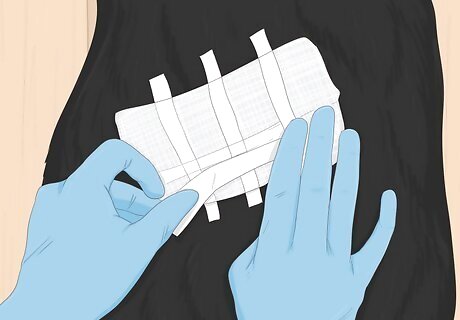
Cover the area securely. Without removing the first gauze bandage, use another piece of gauze or a bandage to cover the area. It will heal in 3 to 5 days, but it’s important to keep the dog from licking or playing with the wound.


















Comments
0 comment